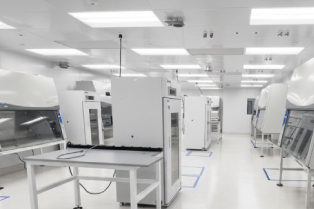Regenerative Breakthrough in Canine Wound Healing
Unexpected Systemic Benefits of SMS Cell Therapy Demonstrate Broad Regenerative Potential
Baji, a 13-year-old Australian Cattle Dog suffering from severe arthritis and neurodegenerative weakness, received intravenous SMS cell therapy to support joint and mobility recovery. Unexpectedly, clinicians observed dramatic healing in an unrelated paw wound that had reached the bone and carried a high risk of amputation.
Within one week of systemic SMS cell administration, the wound site exhibited rapid granulation, new tissue formation, and clear signs of recovery. The wound continued to heal steadily, and amputation was no longer required.
This outcome illustrates that SMS cells, when administered intravenously, can home to distant injury sites, modulate inflammation, and stimulate endogenous repair mechanisms, demonstrating both local and systemic regenerative effects.
From an innovation and market opportunity standpoint, this case provides a powerful proof-of-concept for SMSbiotech’s platform:
- Broad Veterinary Application: SMS therapy could address complex, hard-to-heal wounds in companion animals-an unmet need in veterinary care.
- Non-Surgical Regenerative Solution: Potential to reduce reliance on invasive procedures such as amputation or reconstructive surgery.
- Scalable Translational Value: The mechanism of systemic wound healing has direct implications for human chronic wound and tissue repair markets, including diabetic ulcers, pressure injuries, and trauma recovery.
Baji’s recovery offers compelling early validation of SMSbiotech’s core technology, supporting its strategy to advance systemic, minimally invasive regenerative therapies across both veterinary and human medicine.
SMSbiotech is pleased to share a compelling outcome from its ongoing work with Small Mobile Stem (SMS) cells in companion animals.
Baji, a 13-year-old Australian Cattle Dog suffering from severe arthritis and neurodegenerative weakness, received intravenous SMS cell therapy to support joint and mobility recovery. Unexpectedly, clinicians observed dramatic healing in an unrelated paw wound that had reached the bone and carried a high risk of amputation.
Within one week of systemic SMS cell administration, the wound site exhibited rapid granulation, new tissue formation, and clear signs of recovery. The wound continued to heal steadily, and amputation was no longer required.
This outcome illustrates that SMS cells, when administered intravenously, can hone into distant injury sites, modulate inflammation, and stimulate endogenous repair mechanisms, demonstrating both local and systemic regenerative effects.
From an innovation and market opportunity standpoint, this case provides a powerful proof-of-concept for SMSbiotech’s platform:
- Broad Veterinary Application: SMS therapy could address complex, hard-to-heal wounds in companion animals—an unmet need in veterinary care.
- Non-Surgical Regenerative Solution: Potential to reduce reliance on invasive procedures such as amputation or reconstructive surgery.
- Scalable Translational Value: The mechanism of systemic wound healing has direct implications for human chronic wound and tissue repair markets, including diabetic ulcers, pressure injuries, and trauma recovery.
Baji’s recovery offers compelling early validation of SMSbiotech’s core technology, supporting its strategy to advance systemic, minimally invasive regenerative therapies across both veterinary and human medicine.




